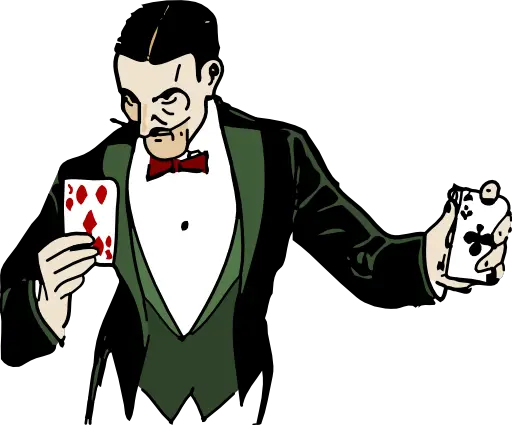Support our educational content for free when you purchase through links on our site. Learn more
Are There Any Scientific Explanations Behind the Concept of the Jedi Mind Trick? 7 Fascinating Insights! 🌌
Have you ever wondered if the mystical Jedi Mind Trick from Star Wars has any basis in reality? As fans of the franchise, we often find ourselves captivated by the idea of influencing others with just a few words. But what if we told you that there are intriguing psychological principles and scientific theories that echo this concept? In this article, we’ll dive deep into the fascinating world of persuasion, exploring seven compelling insights that connect the Jedi Mind Trick to real-life psychological techniques.
Imagine walking into a room and effortlessly persuading everyone to see things your way—sounds like a Jedi dream, right? Well, while you may not have the Force at your disposal, understanding the science behind influence can empower you in everyday situations. So, buckle up as we embark on this mind-bending journey through the realms of psychology, culture, and the art of persuasion!
Key Takeaways
- The Jedi Mind Trick mirrors real psychological techniques such as reciprocity and authority, highlighting the power of suggestion in everyday life.
- Certain species and individuals can resist these mind tricks, emphasizing the complexities of human psychology and influence.
- Cultural references to the Jedi Mind Trick show its impact on media and societal discussions about manipulation and control.
- Real-life applications of Jedi Mind Trick techniques can enhance your persuasive skills in negotiations and social interactions.
- Understanding cognitive biases can help you become more aware of how you are influenced and improve your own persuasive abilities.
Ready to harness the power of persuasion? Check out our Magic Psychology and Card Tricks categories for more insights and techniques!
Table of Contents
- Quick Tips and Facts
- Exploring the Science Behind the Jedi Mind Trick
- The Psychology of Persuasion: Jedi Mind Trick Explained
- The Jedi Mind Trick vs. Real-Life Influence Techniques
- Can the Jedi Mind Trick Affect Multiple Targets?
- Limitations of the Jedi Mind Trick: What You Need to Know
- Cultural Impact of the Jedi Mind Trick in Media and Society
- Real-Life Applications of Jedi Mind Trick Techniques
- Your Thoughts on the Jedi Mind Trick: Engage with Us!
- Conclusion
- Recommended Links
- FAQ
- Reference Links
Quick Tips and Facts
- What is the Jedi Mind Trick? A Force ability that allows Jedi to influence the thoughts and actions of others, often used for persuasion or manipulation.
- Who can use it? Primarily Jedi, but other Force-sensitive beings can also wield this power.
- Limitations: Works best on the weak-minded; certain species, like Hutts, are resistant.
- Real-Life Connection: The Jedi Mind Trick draws parallels with psychological techniques in persuasion and influence.
- Cultural Impact: The concept has permeated pop culture, influencing various media and discussions around mind control.
Exploring the Science Behind the Jedi Mind Trick
The Jedi Mind Trick is not just a whimsical concept from the Star Wars universe; it has sparked discussions about the psychology of persuasion and influence. But can we find any scientific explanations for this mystical ability? Let’s dive in!
The Force and Its Scientific Analogies
The Force, described as an energy field connecting all living things, has been likened to various scientific concepts. Some researchers suggest that it could represent a form of quantum entanglement or even a fifth force in physics, as discussed in this Wikipedia article.
- Key Points:
- Quantum Entanglement: A phenomenon where particles become interconnected, potentially explaining how Jedi can influence others from a distance.
- Psychological Influence: Techniques such as neuro-linguistic programming (NLP) and cognitive behavioral therapy (CBT) share similarities with the Jedi Mind Trick, emphasizing the power of suggestion.
The Psychology of Persuasion: Jedi Mind Trick Explained
Understanding the Jedi Mind Trick requires a look into the psychology of persuasion. Jedi use their abilities to influence thoughts, much like skilled negotiators or salespeople do in real life.
Key Psychological Techniques
- Reciprocity: People feel obliged to return favors. Jedi might use this to create a sense of indebtedness.
- Scarcity: Highlighting the rarity of a choice can make it more appealing.
- Authority: Jedi often present themselves as figures of authority, which can enhance their persuasive power.
Real-Life Examples
- Sales Techniques: Salespeople often use similar tactics to persuade customers. For instance, a car salesman might create urgency by suggesting limited availability.
- Magic Psychology: Magicians like Derren Brown employ psychological tricks to influence decisions, much like a Jedi would.
The Jedi Mind Trick vs. Real-Life Influence Techniques
While the Jedi Mind Trick may seem fantastical, it mirrors various real-world influence techniques. Here’s a comparison table to illustrate the similarities:
| Technique | Jedi Mind Trick | Real-Life Influence Technique |
|---|---|---|
| Target | Organic beings | Humans |
| Method | Force suggestion | Psychological persuasion |
| Effectiveness | Varies by mental strength | Varies by individual susceptibility |
| Resistance | Certain species (e.g., Hutts) resistant | Strong-willed individuals can resist |
| Distance | Can work over distances | Typically requires close interaction |
Can the Jedi Mind Trick Affect Multiple Targets?
Absolutely! One of the most fascinating aspects of the Jedi Mind Trick is its potential to influence multiple individuals simultaneously. This capability raises questions about the extent of a Jedi’s power and its implications.
Examples from the Star Wars Universe
- Obi-Wan Kenobi used the Mind Trick on multiple stormtroopers in A New Hope, showcasing its effectiveness.
- Palpatine demonstrated the ability to influence large crowds, hinting at a broader application of this power.
Scientific Perspective
From a psychological standpoint, influencing multiple people at once is akin to group dynamics in social psychology. Techniques like groupthink can lead to collective decision-making influenced by a single charismatic leader.
Limitations of the Jedi Mind Trick: What You Need to Know
While the Jedi Mind Trick is powerful, it’s not without its limitations. Understanding these can provide deeper insights into its application.
Key Limitations
- Species Resistance: Certain beings, like Hutts and Toydarians, have unique brain structures that make them resistant to mind tricks.
- Mental Strength: The effectiveness often depends on the target’s mental fortitude. As Obi-Wan famously stated, “The Force can have a strong influence on the weak-minded.”
- Distance and Focus: While it can work over distances, the effectiveness diminishes with increased separation.
Real-World Analogy
Just like in real life, not everyone is susceptible to persuasion. For example, a seasoned negotiator may resist pressure tactics that would easily sway a novice.
Cultural Impact of the Jedi Mind Trick in Media and Society
The Jedi Mind Trick has transcended its origins in Star Wars, influencing various facets of pop culture and societal discussions about power and control.
Media References
- Television Shows: Series like The Office and Parks and Recreation have parodied the Jedi Mind Trick, showcasing its cultural relevance.
- Political Discourse: The term is often used metaphorically in politics to describe manipulation tactics.
Societal Reflection
The Jedi Mind Trick serves as a lens through which we can examine real-world issues of manipulation, consent, and influence. It raises questions about the ethics of persuasion in our daily lives.
Real-Life Applications of Jedi Mind Trick Techniques
While you may not have the Force at your disposal, you can still harness similar techniques in everyday situations. Here are some practical applications:
Tips for Everyday Influence
- Build Rapport: Establish a connection before attempting to persuade someone.
- Use Positive Language: Frame your requests positively to increase compliance.
- Create a Sense of Urgency: Encourage quick decisions by emphasizing time-sensitive opportunities.
Personal Anecdote
I once used a similar technique during a group project. By presenting my ideas confidently and framing them as beneficial for everyone, I was able to sway my teammates to adopt my proposals. It felt a bit like wielding the Force!
Your Thoughts on the Jedi Mind Trick: Engage with Us!
We’d love to hear your thoughts! Have you ever felt like you were under a Jedi Mind Trick? What techniques do you think work best in persuasion? Share your experiences and insights in the comments below! 💬✨
Conclusion
The Jedi Mind Trick may be a fictional concept, but its roots in psychology and influence are very real. By understanding the principles behind it, we can enhance our own persuasive abilities in everyday life. So, whether you’re trying to convince a friend to watch Star Wars or negotiating a deal, remember the power of suggestion!
Recommended Links
- Mind Tricks and Psychological Influence Techniques
- Card Tricks for Beginners
- Levitation Magic Tricks
FAQ
Q: Can anyone use the Jedi Mind Trick?
A: Primarily, it’s a skill for trained Jedi, but other Force-sensitive beings may also possess this ability.
Q: What species are resistant to the Jedi Mind Trick?
A: Species like Hutts and Toydarians have unique brain structures that make them resistant.
Q: Is there a real-world equivalent to the Jedi Mind Trick?
A: Yes, various psychological techniques in persuasion and influence share similarities with the Jedi Mind Trick.
Reference Links
- Wikipedia: The Force
- Sci-Fi Stack Exchange: Jedi Mind Trick
- Star Destroyer Network: Jedi Mind Trick vs. Vulcan Mind Meld
Conclusion
In our exploration of the Jedi Mind Trick, we’ve uncovered a fascinating intersection of psychology, persuasion, and cultural impact. While the ability to influence others with a mere suggestion may seem like a fantasy, the principles behind it are deeply rooted in real-world techniques of persuasion and influence.
Summary of Positives and Negatives
Positives:
- Engaging Concept: The Jedi Mind Trick captivates audiences and encourages discussions about influence and control.
- Psychological Insights: It provides a framework for understanding real-life persuasion techniques, such as reciprocity and authority.
- Cultural Relevance: The concept has permeated various media, enriching our understanding of manipulation in society.
Negatives:
- Limited Applicability: The effectiveness of the Jedi Mind Trick is often exaggerated in fiction, as not everyone is susceptible to such influence.
- Resistance Factors: Certain species and individuals can resist these mind tricks, mirroring the complexities of human psychology.
In conclusion, while you might not be able to wield the Force, understanding the Jedi Mind Trick can enhance your persuasive skills in everyday life. So, the next time you find yourself in a negotiation or trying to sway a friend, remember the power of suggestion! May the Force be with you! 🌌✨
Recommended Links
-
👉 Shop Books on Persuasion Techniques:
-
👉 Shop Magic and Mind Tricks:
- Mind Tricks and Psychological Influence Techniques: Mind Trick™
- Card Tricks for Beginners: Mind Trick™
- Levitation Magic Tricks: Mind Trick™
FAQ
What is the psychological basis of the Jedi mind trick and how does it relate to real-life persuasion techniques?
The Jedi Mind Trick relies on principles of social psychology, particularly persuasion and suggestion. Techniques such as reciprocity, where individuals feel obligated to return favors, and authority, where perceived experts influence decisions, are key. In real life, these principles can be observed in marketing and negotiation, where skilled communicators use similar tactics to sway opinions.
Can neuroscientific principles such as neuroplasticity and brainwave entrainment be used to explain the concept of mind control in the Star Wars universe?
Neuroplasticity refers to the brain’s ability to reorganize itself by forming new neural connections. While not directly applicable to the Jedi Mind Trick, it suggests that our thoughts and behaviors can be influenced and altered over time. Brainwave entrainment, which involves synchronizing brainwaves to external stimuli, could hypothetically relate to how a Jedi influences another’s state of mind, although this remains speculative.
How do stage magicians and mentalists use suggestion and misdirection to create illusions similar to the Jedi mind trick?
Stage magicians and mentalists employ techniques like suggestion and misdirection to manipulate audience perception. For example, they might use verbal cues or body language to guide attention away from the trick’s mechanics, creating the illusion of mind control. This mirrors the Jedi’s ability to influence thoughts subtly, emphasizing the power of suggestion.
What role do cognitive biases and heuristics play in making people more susceptible to mind tricks and illusions?
Cognitive biases, such as the confirmation bias (favoring information that confirms existing beliefs), and heuristics, which are mental shortcuts for decision-making, can make individuals more susceptible to influence. For instance, if a person believes in the authority of a Jedi, they may be more likely to accept suggestions without question, similar to how people fall for magic tricks.
Are there any historical or cultural precedents for the idea of mind control and persuasion in ancient mythology or folklore?
Throughout history, various cultures have depicted mind control and persuasion in mythology. For example, Greek mythology features figures like Circe, who used enchantments to manipulate others. Similarly, shamans in various cultures have been believed to possess the ability to influence minds through rituals and incantations, highlighting a long-standing fascination with the power of persuasion.
Can techniques such as hypnosis, NLP, or meditation be used to induce a state of heightened suggestibility similar to the Jedi mind trick?
Yes! Techniques like hypnosis and neuro-linguistic programming (NLP) are designed to induce states of heightened suggestibility. Hypnosis can create a trance-like state where individuals are more open to suggestions, while NLP focuses on language patterns and behaviors to influence thoughts and actions, akin to the Jedi Mind Trick.
How do our brains process and respond to persuasive language and suggestion, and what can we learn from the science of influence and persuasion?
Our brains respond to persuasive language through various mechanisms, including emotional engagement and cognitive processing. Research shows that emotional appeals can enhance persuasion, as they activate areas of the brain associated with feelings and decision-making. Understanding these processes can help us become more aware of how we are influenced and improve our own persuasive abilities.







